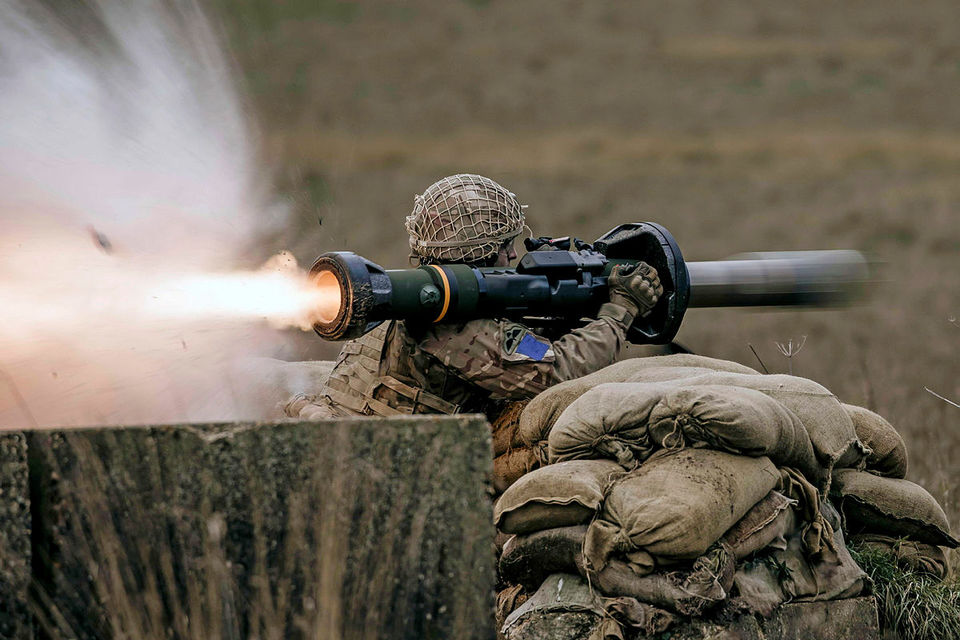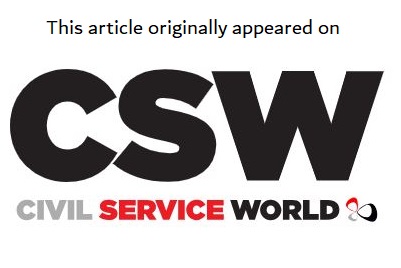New assessment by the National Audit Office finds that failure to make significant changes in stock management of weapons could weaken military resilience and hamper efforts to make cost savings
The Ministry of Defence needs a step-change to deliver better value for money in the management of its £11.8bn inventory of weapons, vehicles, clothing and raw materials – with military resilience and savings at risk if it fails, the National Audit Office has said.
Staff and skills shortages, “siloed” data, and the fact that core IT systems used by the Army and Navy date back to the 1980s are all cited as barriers to delivering the MoD’s improvement goals in the NAO’s latest report.
The watchdog said that the MoD does not consistently dispose of inventory that it no longer requires, which has resulted in “large build-ups” of excess and obsolete stock in warehouses. It said that as of April, 18% of the volume of items held in central warehousing for the MoD were marked as “unserviceable”, while 2% were past their use-by date.
The report said the MoD does not fully understand the people and skills it needs in inventory management, and that staffing pressures are “posing risks to delivery to the front line”.
“Without a more detailed understanding of the roles it requires where it has gaps, the MoD cannot understand what risks it currently holds in its staffing of the support function,” it said.
The report added that training for inventory managers has become “outdated” and flagged that the civilian logistics workforce is “relatively old” compared with other MoD professions, with an average age of 53.
Related content
- MoD signs £73m BT deal to address ‘connectivity poverty’ across defence
- MoD seeks senior exec to boost ‘cyber awareness, behaviours and culture’ across defence sector
- Defence digital plan hampered by lack of skills and ageing tech, NAO report finds
The NAO said that while the MoD has started a number of transformation initiatives to deliver effective and resilient inventory management, the scale of the change needed is “substantial”. It said the programmes also face risks from staff shortages that “threaten their success.”
Two initiatives given as examples are the MoD’s £2.5bn pan-defence Business Modernisation for Support programme to update legacy IT systems and implement standardised processes; and the Future Defence Support Services programme. The latter aims to identify the best commercial arrangements to support commodities procurement and inventory management once the current “logistics commodities and services transformation” contract – delivered by Team Leidos – ends in 2028.
“Both programmes have adopted good principles in understanding the organisational change they wish to achieve, particularly in improving the quality and consistency of working practices and data, and in aligning MoD’s commercial arrangements to the same strategic objectives,” the report said. “However, both programmes have staffing gaps at their early stages, which will affect their ability to refine and deliver their scopes.”
The report said that the MoD has been slow to upgrade its legacy IT estate and that its inventory data still suffers from limitations that undermine effective decision-making.
Each command within the MoD operates its own core inventory-management system, and that the Army’s SS3 system and the Navy’s CRISP counterpart are both nearly 40 years old. This makes data difficult to share and hinders the MoD’s ability to get an overall picture of inventory, according to the report.
“The Navy’s inventory system can record that an item is damaged but not to what extent, making it difficult to know what could be repaired,” the report said. “The MoD reduced the number of logistics support systems it uses from around 250 to 89 between 2010 and 2022. While this has realised some local benefits, its data remain siloed and difficult to access across the MoD, preventing its inventory management being fully information-led.”
‘Difficult to track’
The report said that while the majority of the MoD’s inventory is managed through inventory-management systems, some items are not. It said one example where there is scope for improvement is shipping containers – because the department cannot account for thousands of them.
“There is no team with overall responsibility for managing these containers and, once the MoD sends a container out to a command, it can be difficult to track it,” the report said. “Out of around 7,600 containers within its estate, the MoD does not know the location of around 4,500 of them.”
The NAO said that at the start of this year ,the MoD bought a “contingency stockpile” of containers after assessing that it would not be able to procure enough if it needed to move large quantities of items for a deployment at short notice.
NAO head Gareth Davies said growing global instability and plans for an increased deployed presence set out in the government’s Integrated Review made it “vitally important” that the Armed Forces had the inventory they need.
“The Ministry of Defence has taken steps to improve its inventory management, and these have resulted in improvements in logistics and commodity procurement and reductions in over-purchasing,” he said. “However, long-standing weaknesses with its inventory management remain, primarily from legacy IT systems. The MoD must ensure it prioritises the resources it needs for its transformation programmes, otherwise its ability to build resilience and deploy the people and equipment it needs in the right places will be frustrated.”
The NAO’s recommendations to the MoD include the development of an assessment of skills and resource requirements for inventory management – as well as the resourcing risks currently being carried.
The MoD was also urged to identify and prioritise the resources needed in its Defence Support Organisation to ensure that the department’s transformation programmes can be implemented successfully.
Garry Graham, deputy general secretary of the Prospect union, said the MoD’s ongoing efforts to put the brakes on recruitment were clearly exacerbating some of the problems highlighted by the NAO.
“It’s no wonder the MoD is struggling with staffing issues when its recruitment controls, due to remain in place until 2025, are actively making the matter worse,” he said. “The shorted-sighted decision to cut civilian staff to fund forces pay is another contributing factor. The fact is that without sufficient civilian staff the Armed Forces cannot operate in the way they ought to. Effective defence requires effective management and that means looking after your civilian workforce as well as your frontline. The world is becoming more dangerous and it is essential our capability keeps up.”
An MoD spokesperson said: “We have made vast improvements to the way we manage inventory, including a modernised information system, and rationalising and reducing the number of logistics systems from 250 to 89 over the past 12 years. We make sensible judgments to balance having the right equipment and material to support our operations with the costs associated with holding and storing it, whilst delivering value for money for the taxpayer.”





